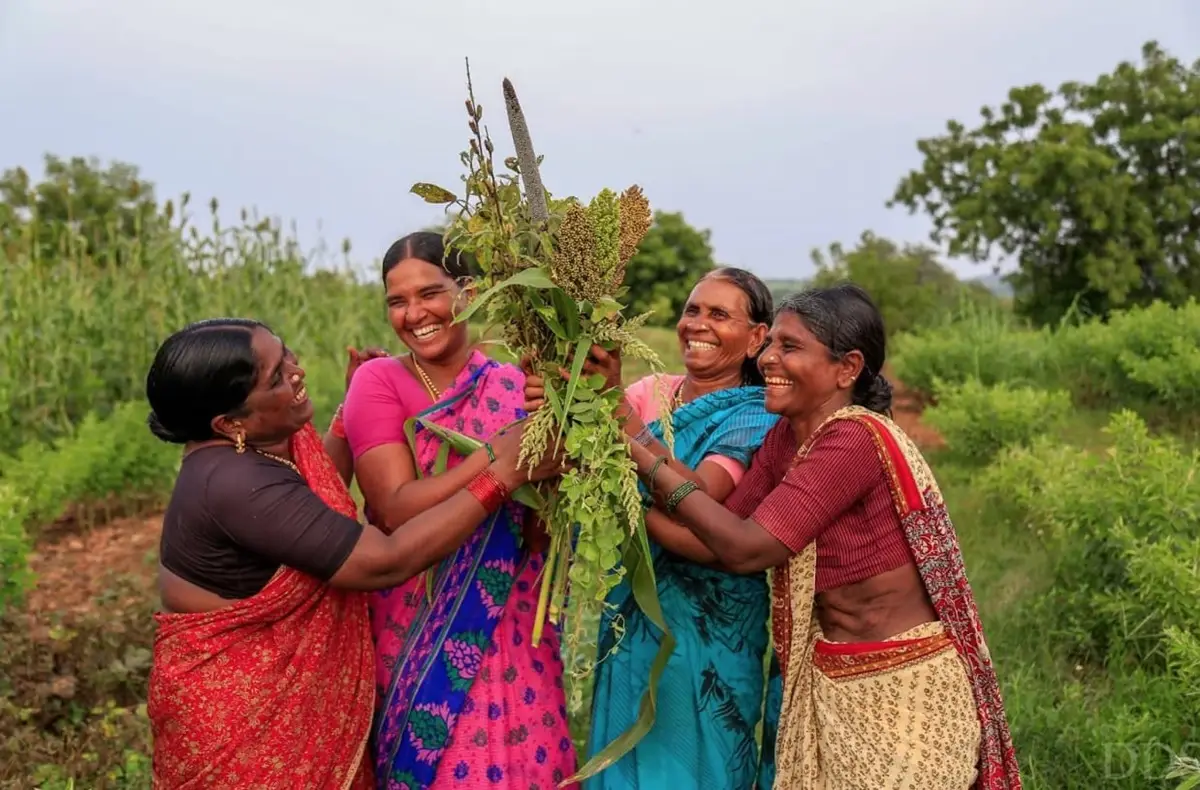Table of Contents
In a historic resolution, the United Nations General Assembly (UNGA) has officially declared 2026 as the International Year of the Woman Farmer, aiming to recognize, celebrate, and empower the indispensable role of women in agriculture. This initiative seeks to bridge gender gaps, promote inclusive agricultural policies, and improve the livelihoods of women farmers, especially in developing economies like India, where women constitute a major part of the agricultural workforce but continue to face systemic inequalities.
Why in News?
On June 18, 2025, the UN General Assembly officially passed a resolution designating 2026 as the International Year of the Woman Farmer. The declaration seeks to promote gender-equitable agricultural policies and highlight the challenges and achievements of women farmers globally.
This decision is particularly important for countries like India, where nearly 80% of economically active women work in agriculture, yet own only 8.3% of the land, according to NFHS data.
Women in Agriculture: Key Global & Indian Statistics
| Parameter | Global | India |
|---|---|---|
| Contribution to food production | ~50% | ~80% of economically active women work in agriculture |
| Land ownership | Low across developing countries | Only 8.3% of women own farmland |
| Food supply production (developing countries) | 60–80% | Rural women’s agri-participation: 76.95% (PLFS 2023–24) |
Major Challenges Faced by Women Farmers
- Double Burden: Balancing intensive agricultural work with household responsibilities.
- Limited Land Ownership: Hinders their ability to access credit, subsidies, and decision-making forums.
- Digital Divide: Over 51% of rural women aged 15 and above do not own a mobile phone, limiting access to vital agricultural advisories.
- Climate Vulnerability: Women disproportionately suffer the impacts of droughts, floods, and other climate-related disruptions.
- Insufficient Financing: Existing microfinance schemes are often too small-scale for sustainable, long-term investments.
Government and International Support Initiatives
- Mahila Kisan Sashaktikaran Pariyojana: Skill-building programs that improve women farmers’ access to inputs and resources.
- Sub-Mission on Agricultural Mechanisation: Provides subsidies ranging from 50% to 80% on agricultural tools and machinery.
- National Food Security Mission: Earmarks 30% of its funds for women farmers in select states and union territories.
Case Study: ENACT Project, Assam
The ENACT Project, a collaborative effort by the World Food Programme, Government of Assam, and funded by Norway, is a pioneering model empowering women farmers. It uses mobile technology to deliver weekly climate advisories and promotes climate-resilient agriculture through smart seed systems and local information centers. The project also fosters partnerships with agricultural universities and government departments, enhancing the sustainability of women-led farming initiatives.
Policy Recommendations for the Future
- Gender-Sensitive Policies: Employ sex-disaggregated data to design tailored schemes addressing women’s unique needs.
- Enhanced Access to Resources: Ensure women farmers have better access to land, credit, irrigation, technology, and climate information.
- Support Women-led Agricultural Value Chains: Encourage self-help groups, cooperatives, and improved market connectivity.
- Capacity Building and Social Empowerment: Include women actively in agricultural planning, leadership, and policy formulation.
- Break Gender Biases: Recognize and formalize women’s contributions to agriculture. For example, Maharashtra’s Kisan Sakhi groups, led by women, have increased market visibility and leadership roles for women farmers.
Significance of Declaring 2026 as the International Year of the Woman Farmer
- Promotes inclusive and sustainable agricultural growth by empowering half of the agricultural workforce.
- Strengthens climate-resilient food systems through the leadership and innovation of women farmers.
- Tackles structural inequalities in agricultural economies, fostering gender equality.
- Enhances global food security and rural livelihoods, benefiting communities worldwide.
Conclusion
The UN’s declaration of 2026 as the International Year of the Woman Farmer is more than symbolic—it is a global call to action. It aims to transform how the world values women in agriculture by ensuring their rightful access to resources, decision-making, and recognition. With inclusive policies, grassroots empowerment, and global cooperation, this initiative can lay the foundation for gender-just and food-secure societies.


 World Summit on Disaster Management (WSD...
World Summit on Disaster Management (WSD...
 Domestic Systemically Important Banks (D...
Domestic Systemically Important Banks (D...
 The Missing Link in India’s Critical M...
The Missing Link in India’s Critical M...

























